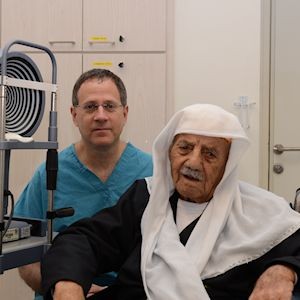
Abstract:
 Although cataracts can be removed only with surgery, modern cataract surgery is extremely efficient and considered one of the most common – if not most common – and one of the safest surgical procedures available. Once discovered, special eye drops usually stabilize the increased pressure that underlies glaucoma. Some patients need laser surgery, while a minority will be need conventional surgery. Glaucoma surgery opens a channel for fluid to drain out of the eye to compensate for the normal channel that is not functioning.
Although cataracts can be removed only with surgery, modern cataract surgery is extremely efficient and considered one of the most common – if not most common – and one of the safest surgical procedures available. Once discovered, special eye drops usually stabilize the increased pressure that underlies glaucoma. Some patients need laser surgery, while a minority will be need conventional surgery. Glaucoma surgery opens a channel for fluid to drain out of the eye to compensate for the normal channel that is not functioning.
Full Text:
I am a 80-year-old woman who has to undergo a single operation for cataracts and glaucoma. I was wondering what the risks are, and whether one operation for both conditions is better than two separate ones. E.W., Haifa
Prof. Eytan Blumenthal, head of the glaucoma unit at Hadassah- University Hospital in Jerusalem’s Ein Kerem, replies:
Cataracts are a very common eye condition in the elderly. In fact, by the age of 100, everybody including myself would develop cataracts in both eyes that require surgery.
Although cataracts can be removed only with surgery, modern cataract surgery is extremely efficient and considered one of the most common – if not most common – and one of the safest surgical procedures available.
In contrast, glaucoma is a much more complex condition to manage. However, with proper treatment and follow-up, most eyes can retain useful functioning vision for years to come.
The most devastating glaucoma cases I encounter are usually those that were not diagnosed early, and once the patient arrives, it’s already very late in the disease process.
In general, glaucoma-caused damage to the visual field cannot be reversed, due to neural damage (optic nerve tissue). But fortunately, glaucoma in most of my patients is discovered early – in a simple and painless office exam by any ophthalmologist.
Once discovered, special eye drops usually stabilize the increased pressure that underlies glaucoma. Some patients need laser surgery, while a minority will be needing conventional surgery. Glaucoma surgery opens a channel for fluid to drain out of the eye to compensate for the normal channel that is not functioning.
A minority of patients who need glaucoma surgery also happen to have a cataract. In these eyes, we often suggest treating both problems in a single procedure, which has been offered for nearly two decades. It may take 10 minutes more than the 30 or 40 minutes that each one takes separately.
One of the advantages of modern eye surgery is the ability to operate through a tiny incision. This results in faster rehabilitation, and in fact, some of my patients have gone to work two days after surgery, although I usually recommend that they get off the fast lane for a while.
The single operation for both conditions poses a slightly higher risk of infection, subsequent surgery and other rare complications, but these appear in less than 5% of patients. If your glaucoma expert says you should have the single operation to “kill two birds with one stone,” I would recommend that you go ahead with it.


